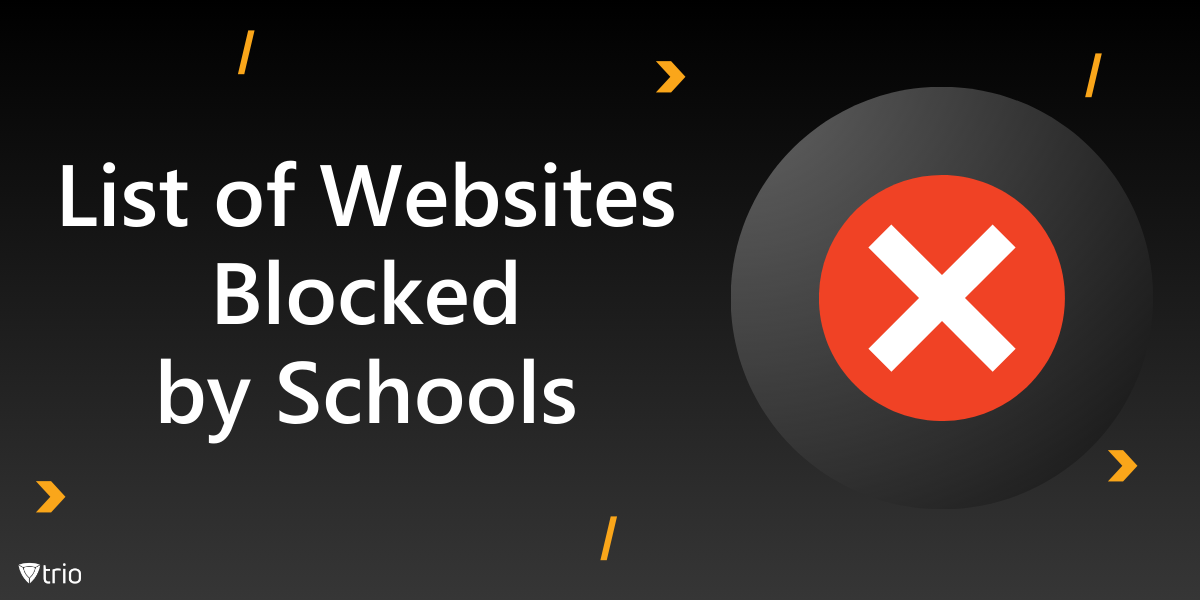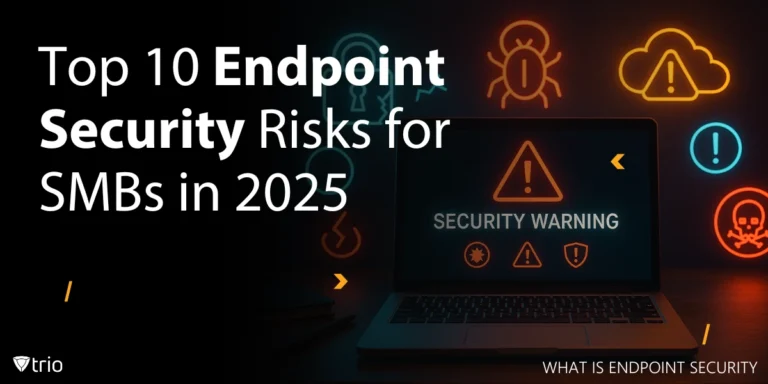Technology has made the use of the internet compulsory in the modern world, especially in the provision of education. Nevertheless, schools use website restrictions for learning environment, obscenity and legal requirements control purposes.
Till 2025, some websites have continued to be banned in many schools and colleges for one reason or another since they cause distractions or post upsetting material. Here’s a list of some commonly blocked websites and URLs in schools, often due to content concerns, distraction potential, or security issues:
Social Media Sites:
- Facebook: https://www.facebook.com
- Twitter: https://www.twitter.com
- Instagram: https://www.instagram.com
- Snapchat: https://www.snapchat.com
- TikTok: https://www.tiktok.com
Streaming Services
- YouTube: https://www.youtube.com
- Netflix: https://www.netflix.com
- Twitch: https://www.twitch.tv
- Spotify: https://www.spotify.com
Gaming
- Discord: https://www.discord.com
- Roblox: https://www.roblox.com
- Fortnite: https://www.epicgames.com/fortnite
- Minecraft: https://www.minecraft.net
Adult Content
- Pornhub: https://www.pornhub.com
- Xvideos: https://www.xvideos.com
- Redtube: https://www.redtube.com
File Sharing
- Dropbox: https://www.dropbox.com
- Google Drive: https://drive.google.com
- MediaFire: https://www.mediafire.com
Chat and Messaging
- WhatsApp Web: https://web.whatsapp.com
- Telegram: https://web.telegram.org
- Skype: https://www.skype.com
Download Sites
- The Pirate Bay: https://thepiratebay.org
- 1337x: https://1337x.to
Miscellaneous
- Craigslist: https://www.craigslist.org
- eBay: https://www.ebay.com
- Tumblr: https://www.tumblr.com
- Reddit: https://www.reddit.com
- LiveLeak: https://www.liveleak.com
However, there are education related sites that may be disabled due to having such contents as low standard pictures, and any other thing that may distract the learners as per their school’s principles and regulations.
Some of the blocking policies also, on enterprises, may be highly dependent on the type, culture, and the type of security that enterprise needs most.
Other personal emails like Gmail, Yahoo etc. may be restricted as non-relevant to their work, shopping sites such as Amazon, eBay and webpage corresponding news sites can also possibly be accessed. Please always seek advice from your IT or HR offices for more information concerning your organization.

How Do Schools Block Websites?
Schools may block websites to maintain a safe learning environment. Here are some common methods they use to restrict access:
- Content Filtering Software: Software is used by most schools which filter categories of websites and does not allow access to specific sites like social, gaming or adult related sites. Such programs can selectively filter based on keywords, maybe specific categories or URLs.
- Firewall Rules: Firewalls can be set up in order to prevent the use of specific websites or kinds of information. The IT administrators can easily put restrictive policies that bar users on the school network from visiting IPs or domains.
- Proxy Servers: Some schools might use what is known as proxy servers which forward internet connections. These can be configured to like only the content which is selected by the school and in the mean while logging all the requests which are made and blocking all the sites which are not printed out by the school.
- DNS Filtering: That is why some schools employ DNS filtering, which only allows the user to resolve a given domain name. When a user attempts to visit a prohibited site, the DNS request will not return and therefore denying the particular site.
- Network policies: Schools can implement other restrictions on the network type of traffic allowed in a certain school. For example, they can block all URLs that may contain some of them since the above ports can be associated with games or video streaming.
- User Authentication: Certain networks may ask users to login for the network system. Authorities define the user type as a student, staff, or guest, and the former has the lowest level of access to this site.
- Monitoring and Logging: Internet usage might therefore be closely monitored and all attempts at attempting to access banned sites may well be monitored by schools to pursue this directive. This monitoring can prevent students from trying to access any contraband content.
Secret Websites for Schools:
There are many websites that can be really helpful in performing school assignments. These hidden websites can be used to improve knowledge, mobilise creativity, and participate in studies.
Below is a list of some of these gems.
- Khan Academy: Provides free lessons and practice exercises in high school subjects, including math, social studies, and English.
- Coursera: Comprises permitted course materials from universities and colleges globally; some of which are free.
- edX: Like Coursera it also provides online courses from universities and institutions which are free of cost.
- Quizlet: An application to build flash cards, quizzes and study sets that may prove handy in exam preparation.
- Wolfram Alpha: An analytical research tool in the form of an equation solver, that can solve equations and at the same time provide data on various topics.
- Project Gutenberg: A wide list of free eBooks, many of which contain the most famous works of world literature.
- Library Genesis: The collection of journals containing the articles, books and other written materials or documents necessary for an academic achievement.
- Open Culture: Gathers links to free online courses, books, and movies which can be necessary for students.
- Ted-Ed: Provides lessons and videos based on some topics presented at TED talks.
- FutureLearn: Offers an opportunity to take a variety of courses from a variety of universities and organisations online.
School Internet Filtering Methods
Internet filtering in schools refers to the rationing of certain sites and other Interstate contents that students get to interact with during their learning hours at school.
Here’s a deeper look into how this works and its key components:
Purpose of Internet Filtering
- Safety: These contents include sexual materials, violence, swear words and racism – all of these should be banned from appearing to students.
- Focus: Do not use social networks, games, and entertainment sites at school often.
- Compliance: It is essential, for example in the US, to ensure compliance with laws and regulations on internet Safety such CIPA (Children’s Internet Protection Act).
Common Filtering Methods
- Categorical Filtering: It also follows a certain type of websites (e.g., social networking sites, games, and adult websites), they are either banned or permitted based on the classification they belong to.
- Keyword Filtering: The use of specific keywords can be disabled, thus removing capability to access any site containing those words.
- URL Filtering: It means that different URLs can be filtered or unfiltered irrespective of the content type they contain.
- IP Address Blocking: Some of the features that can be managed are as follows; Ability to deny particular IP address to get to particular servers.
Implementation
- Content Filtering Software: Schools employ software that helps to filter all the traffic that goes through the Internet according to certain parameters.
- Firewalls: Still a hardware or a software firewall can be set up to reject specific sorts of content or sites.
- Proxy Servers: Some schools employ proxies to control and limit traffic while others employ it to filter traffic before going online.
- DNS Filtering: Schools can have DNS services which are programmed to filter certain domain names by certain filtering rules.
Challenges and Considerations
- Overblocking: The problem with filtering can come in the form of keen filtering which may deny genuine educational resources or research websites.
- Circumvention: Students may access banned websites using other technologies like VPNs, or proxy sites and thus containing them becomes a big problem for the school administration.
- Educational balance: In addition to this, it means that the schools should exclude such dangers in their aspects as at the same time they have to offer the students information that is useful in the learning process.
Monitoring and Reporting
- Activity Logging: Most filtering mechanisms record internet usage to determine which sites are being visited so that the schools can take action.
- Usage Reports: The teachers can produce some statistics in regard to Internet usage with the purpose of filter checking.
Parental Involvement
- Communication: Parents and guardians concerned with schools find out on filtering policies, and why restrictions must be put in place.
- Feedback: Schools may need reactions from parents concerning the filter system and its effects on schooling of students.
On the whole, what becomes clear in 2025 is that educational concern and student security stay unchanged with the help of website blocking strategies. Even though such restrictions might sometimes interfere with receipt of useful information and effective tools, such measures are considered indispensable to creating a more suitable learning atmosphere.
Achieving an optimal level of security and openness continues to be a problem in schools. Such a filtering system must be capable of preventing risky material from getting through while at the same time, encouraging free thinking and research.
Trio Enhances Safety and Learning
The proper filtering of internet content in schools is more than just a blocking of harmful sites; it is about providing a safe, healthy online environment for learning. One of the ways is to use the best school internet filtering software on the market. Customizable and dynamic filtering tools offered by Trio Mobile Device Management (MDM) allow schools to optimize the balance between security and access.
Want to enhance your school’s internet filtering strategy? Try a free demo of Trio today and see how our MDM for schools can help you create a safer, more effective learning environment.
Trio Education provides digital safeguarding for K-12 schools, monitoring devices to assure a safe and education-focused online learning environment through features like web and search filtering, and application and screen-time control.
Get Ahead of the Curve
Every organization today needs a solution to automate time-consuming tasks and strengthen security.
Without the right tools, manual processes drain resources and leave gaps in protection. Trio MDM is designed to solve this problem, automating key tasks, boosting security, and ensuring compliance with ease.
Don't let inefficiencies hold you back. Learn how Trio MDM can revolutionize your IT operations or request a free trial today!





